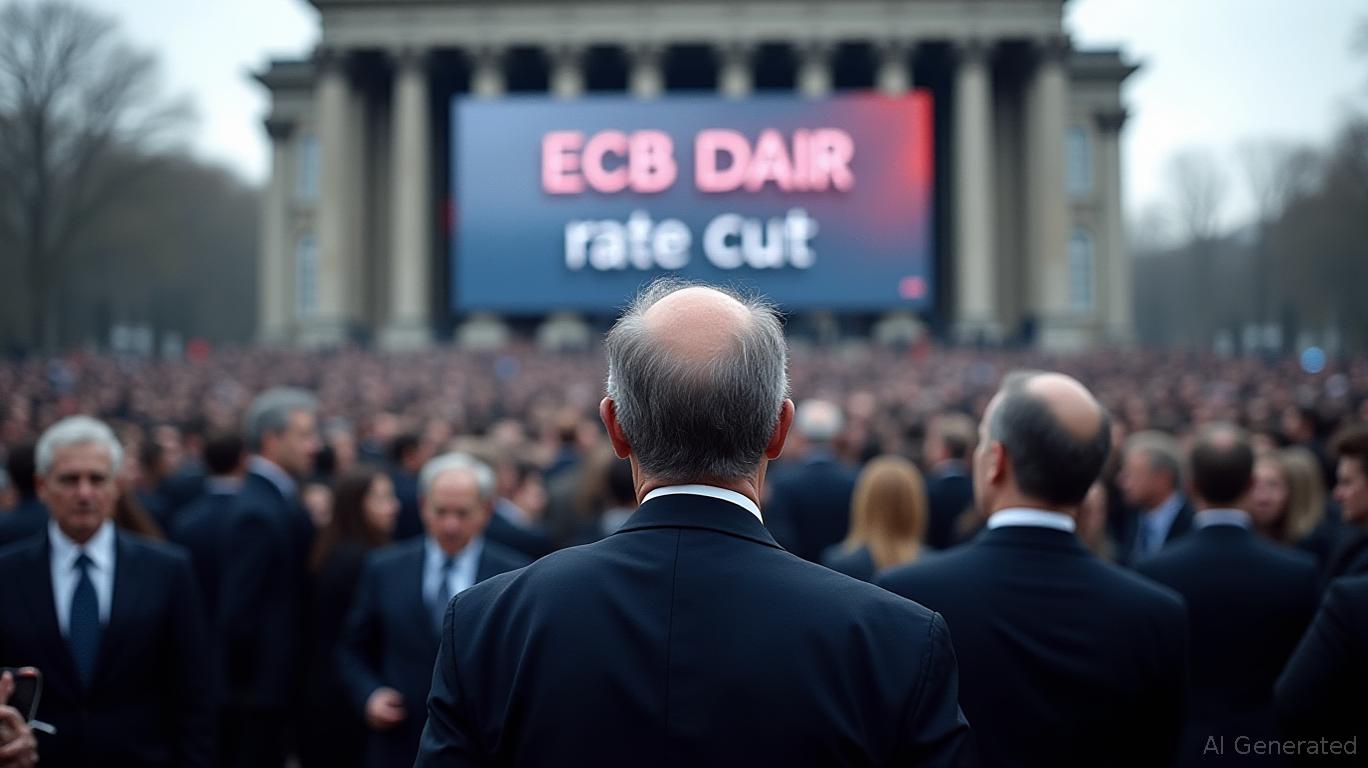ECB Cuts Rates to 2%, Signals Possible Pause
Epic EventsSunday, Jun 8, 2025 10:10 pm ET
The European Central Bank (ECB) has announced a reduction in its deposit rate to 2%, marking the eighth cut within a year. This decision reflects the central bank's response to slowing inflation across the eurozone. The move, widely anticipated by market analysts, indicates a potential pause in rate adjustments as policymakers assess the impact on inflation and economic activity.
Introduction
Interest rates are a critical tool for monetary policy, influencing economic growth, inflation, and investment decisions. The ECB's latest rate cut comes amid a backdrop of declining price pressures in the eurozone, with inflation falling below the ECB's 2% target. This reduction aims to bolster economic activity by lowering borrowing costs, thereby supporting growth in the region.
Data Overview and Context
The deposit rate, now at 2%, is the interest rate banks receive for overnight deposits with the . This rate is vital for steering monetary policy and influencing lending rates across the eurozone. The decision follows a drop in inflation to 1.9% last month, below the central bank's target. The ECB's adjustments are based on updated projections showing a medium-term inflation rate of around 2%.
Analysis of Underlying Drivers and Implications
Key factors driving the ECB's rate decision include declining energy prices and the strengthening euro, which have contributed to lower inflation. Additionally, the global trade environment, particularly the policies of the U.S. administration, presents uncertainties that could affect eurozone growth and inflation. The ECB remains committed to maintaining inflation at its medium-term target and will continue to assess the impact of its monetary policy on economic conditions.
Market Reactions and Investment Implications
Following the ECB's decision, European stock markets responded positively, with indices like the Stoxx Europe 600 and Germany's DAX seeing gains. Government bond yields, particularly in Germany and France, fell as investors anticipated continued accommodative monetary policy. For investors, sectors sensitive to interest rates, such as real estate and financials, may benefit from lower borrowing costs.
Conclusion & Final Thoughts
The ECB's latest rate cut underscores its commitment to stabilizing inflation around its target. The reduction in rates, combined with the potential for a pause in further cuts, suggests a cautious approach as policymakers navigate economic uncertainties. Investors should watch upcoming data releases, particularly those related to inflation and economic growth, for further insights into the ECB's monetary policy trajectory.
Introduction
Interest rates are a critical tool for monetary policy, influencing economic growth, inflation, and investment decisions. The ECB's latest rate cut comes amid a backdrop of declining price pressures in the eurozone, with inflation falling below the ECB's 2% target. This reduction aims to bolster economic activity by lowering borrowing costs, thereby supporting growth in the region.
Data Overview and Context
The deposit rate, now at 2%, is the interest rate banks receive for overnight deposits with the . This rate is vital for steering monetary policy and influencing lending rates across the eurozone. The decision follows a drop in inflation to 1.9% last month, below the central bank's target. The ECB's adjustments are based on updated projections showing a medium-term inflation rate of around 2%.
Analysis of Underlying Drivers and Implications
Key factors driving the ECB's rate decision include declining energy prices and the strengthening euro, which have contributed to lower inflation. Additionally, the global trade environment, particularly the policies of the U.S. administration, presents uncertainties that could affect eurozone growth and inflation. The ECB remains committed to maintaining inflation at its medium-term target and will continue to assess the impact of its monetary policy on economic conditions.
Market Reactions and Investment Implications
Following the ECB's decision, European stock markets responded positively, with indices like the Stoxx Europe 600 and Germany's DAX seeing gains. Government bond yields, particularly in Germany and France, fell as investors anticipated continued accommodative monetary policy. For investors, sectors sensitive to interest rates, such as real estate and financials, may benefit from lower borrowing costs.
Conclusion & Final Thoughts
The ECB's latest rate cut underscores its commitment to stabilizing inflation around its target. The reduction in rates, combined with the potential for a pause in further cuts, suggests a cautious approach as policymakers navigate economic uncertainties. Investors should watch upcoming data releases, particularly those related to inflation and economic growth, for further insights into the ECB's monetary policy trajectory.

Disclaimer: The news articles available on this platform are generated in whole or in part by artificial intelligence and may not have been reviewed or fact checked by human editors. While we make reasonable efforts to ensure the quality and accuracy of the content, we make no representations or warranties, express or implied, as to the truthfulness, reliability, completeness, or timeliness of any information provided. It is your sole responsibility to independently verify any facts, statements, or claims prior to acting upon them. Ainvest Fintech Inc expressly disclaims all liability for any loss, damage, or harm arising from the use of or reliance on AI-generated content, including but not limited to direct, indirect, incidental, or consequential damages.

Comments
No comments yet